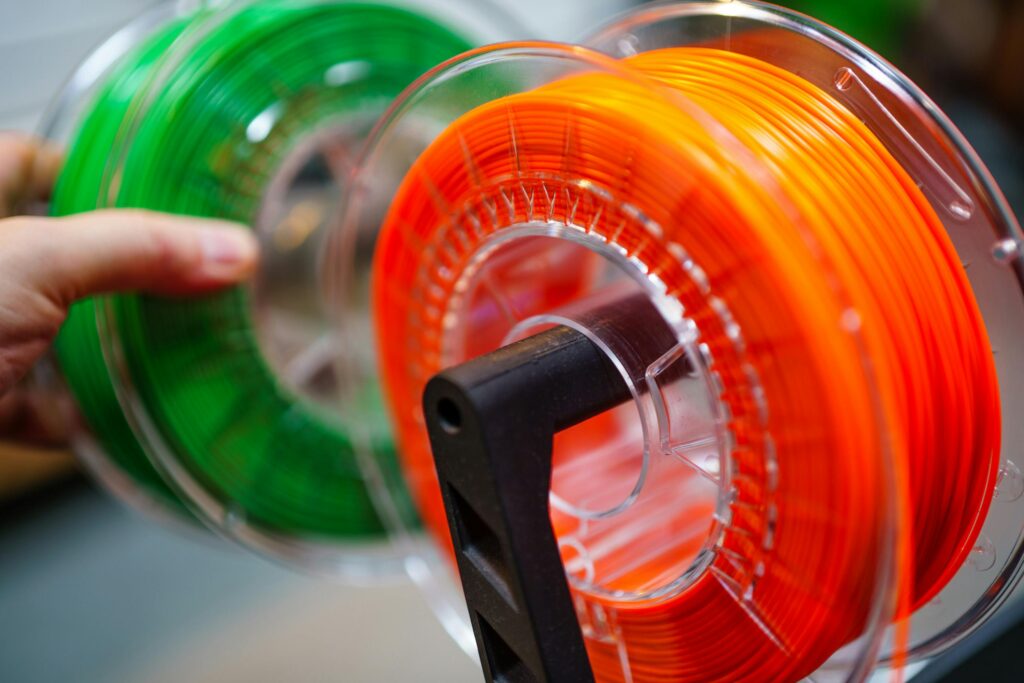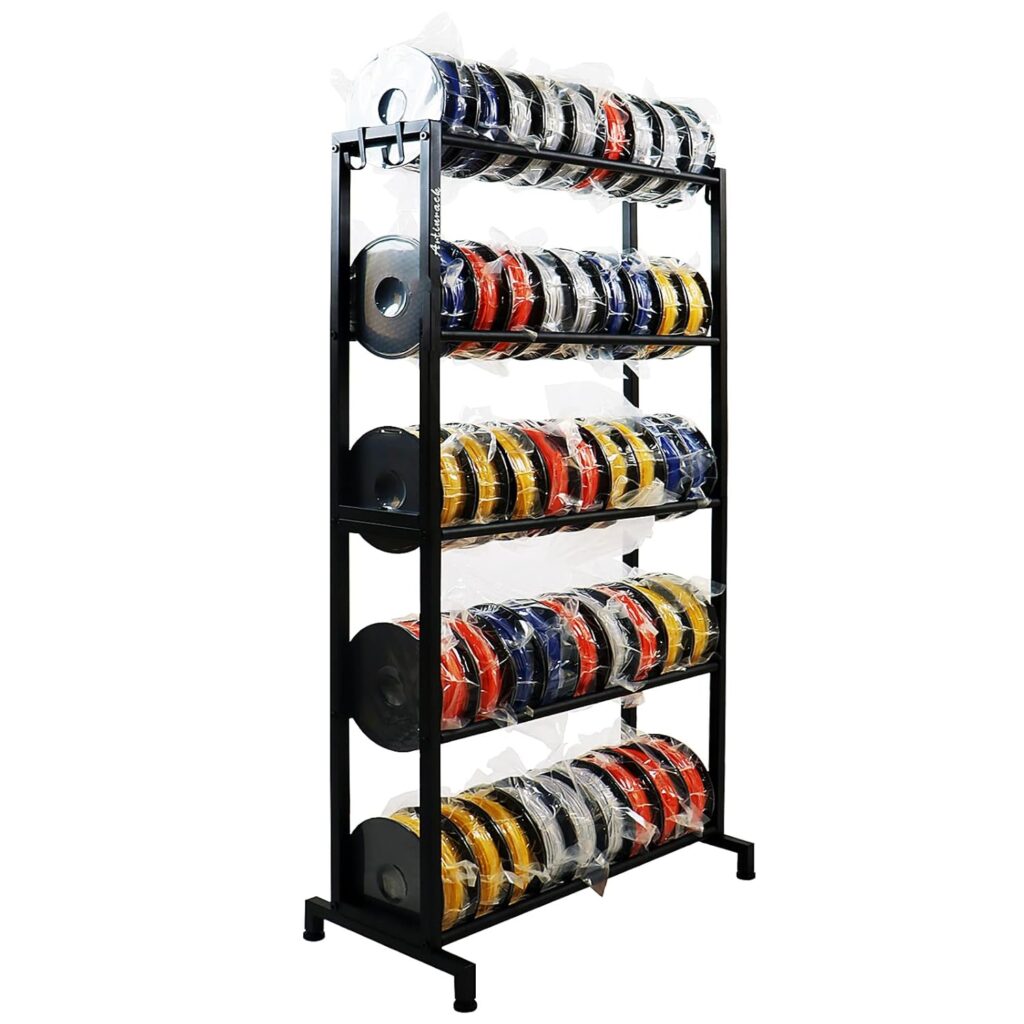
Printer Filaments are the fundamental materials in 3D printing, the threads that weave your creative visions into tangible reality. Whether you’re creating artistic sculptures, functional prototypes, or wearable gadgets, understanding filaments is the key to achieving outstanding results. For both hobbyists and professionals, mastering filament types, properties, and handling practices is essential to elevate the quality and functionality of your 3D printing projects.

What Are 3D Printer Filaments?
At their core, 3D printer filaments are thermoplastic materials designed to be melted and extruded layer by layer to create three-dimensional objects. They come in a wide variety of types, each with specific properties that make them suitable for different applications. Choosing the right filament can mean the difference between a perfect print and one plagued by warping, brittleness, or failed adhesion.
The Science Behind Filaments
Filaments are typically spooled threads of plastic, fed into the 3D printer’s heated nozzle, melted, and deposited on the build surface. As they cool, the material solidifies, forming the desired structure. Each filament type has unique melting points, cooling characteristics, and other properties, making it vital to pair the material with the right printer settings.
Anecdote:
In my early 3D printing days, I was baffled by failed prints and brittle parts. It turned out I had used ABS filament for functional parts without adjusting the bed temperature properly. That was my first lesson in why understanding filament properties is crucial.
Popular Filament Types

Overview of Common Filaments
There are five main types of filaments frequently used in 3D printing: PLA, ABS, PETG, TPU, and Nylon. Each of these materials offers unique properties, advantages, and challenges.
| Criteria | PLA | ABS | PETG | TPU | Nylon |
|---|---|---|---|---|---|
| Ease of Printing | ✅ Easy | ⚠ Moderate | ⚠ Moderate | ✅ Easy | ⚠ Challenging |
| Strength | ⚠ Moderate | ✅ Strong | ✅ Strong | ⚠ Moderate | ✅ Very Strong |
| Flexibility | ❌ Low | ❌ Low | ⚠ Moderate | ✅ High | ✅ High |
| Heat Resistance | ⚠ Moderate | ✅ High | ✅ High | ⚠ Moderate | ✅ High |
| UV Resistance | ❌ Low | ❌ Low | ✅ High | ⚠ Moderate | ✅ High |
| Biodegradability | ✅ Yes | ❌ No | ❌ No | ❌ No | ❌ No |
| Price | ✅ Affordable | ⚠ Moderate | ⚠ Moderate | ✅ Affordable | ❌ Expensive |
PLA (Polylactic Acid)
PLA is the go-to filament for many beginners due to its ease of use and eco-friendliness. Derived from renewable resources like corn starch, it’s biodegradable and offers vibrant colors. However, its low heat resistance makes it unsuitable for functional parts exposed to high temperatures.
Anecdote:
I once used silk filament for smooth 3D prints of a decorative vase as a gift. The glossy finish amazed everyone, but when it was left on a sunny windowsill, it deformed—lesson learned about PLA’s limitations!
ABS (Acrylonitrile Butadiene Styrene)
Known for its strength and durability, ABS is a favorite for creating functional parts. However, it requires a heated bed and emits fumes when printing, so proper ventilation is crucial. ABS filament troubleshooting tips include adding enclosures to reduce warping.
Anecdote:
While printing a smartphone stand with ABS, I struggled with severe warping. After some trial and error, applying a glue stick to the heated bed solved the problem perfectly.
PETG (Polyethylene Terephthalate Glycol-Modified)
PETG is an excellent middle ground between PLA and ABS, offering strength, durability, and ease of printing. It’s ideal for durable 3D prints that require some flexibility and weather resistance.
Anecdote:
I printed a shower hook using PETG filament for durable 3D prints. Two years later, it’s still holding up in the humid environment, proving PETG’s resilience.
TPU (Thermoplastic Polyurethane)
For projects requiring flexibility, TPU is an outstanding choice. It’s easy to print and produces flexible parts like phone cases or gaskets. The flexible filament for 3D printing projects opens up a world of possibilities.
Anecdote:
Printing a custom-fit watch strap with TPU was a rewarding challenge. Fine-tuning my retraction settings made all the difference in achieving a flawless print.
Nylon
High-temperature filaments for industrial applications like Nylon offer unparalleled strength and durability. However, they’re challenging to print and require precise settings.
Anecdote:
My attempt to print a load-bearing part with Nylon was initially a disaster. Absorbed moisture led to bubbling during extrusion, teaching me the importance of filament storage solutions to prevent moisture damage.
Factors to Consider When Selecting Filaments
Selecting the right filament involves balancing several factors, such as project requirements, printer capabilities, and environmental considerations.
Application Needs
Think about the purpose of your print. Decorative items? Go for PLA. Durable prototypes? PETG or ABS might be better. Functional parts in high-stress conditions? Nylon is often the best choice.
Printer Compatibility
Not all printers can handle all materials. For example, carbon fiber filament for high-strength prints may require a hardened steel nozzle due to its abrasive nature.
Filament Handling and Storage

Proper care is crucial for maintaining filament quality. Most filaments are hygroscopic, meaning they absorb moisture, which can degrade print quality and strength.
Tips for Storage
- Airtight Containers: Store filaments in sealed containers with desiccants.
- Drying Filaments: If your filament absorbs moisture, use a filament dryer or a low-temperature oven to dry it.
Anecdote:
One rainy season, I forgot to seal my Nylon filament. The moisture ruined an entire spool, and I learned the hard way to invest in airtight storage.
Exploring Exotic Filaments
Expand your creative horizons with specialty filaments tailored for unique projects.
Types of Exotic Filaments
- Wood Filament: Ideal for artistic projects.
- Glow-in-the-Dark Filament: Perfect for fun designs like Halloween decorations.
- Silk PLA: Creates glossy, smooth finishes.
- Carbon Fiber Filament: Offers strength and rigidity for functional parts.
Troubleshooting Common Filament Issues
Common Problems and Fixes
- Nozzle Jams: Often caused by impurities or incorrect settings. Troubleshooting filament jams in 3D printers can involve cleaning the nozzle or adjusting temperatures.
- Warping: Ensure proper bed adhesion by using adhesives or a heated bed.
Anecdote:
My first PLA filament for beginner 3D printing enthusiasts jammed because I used a nozzle temperature that was too low. Adjusting it solved the issue instantly!
Drill Down on our filament-specific pages:
- PLA
- ABS
- PETG
- TPU
- Nylon
- Exotic Filaments
- Specialty Filaments
- Care & Storage
- Troubleshooting Tips
- How to Buy Filament
- Innovations in Filament Technology

Conclusion
Filaments are the building blocks of 3D printing, each offering unique possibilities. Whether you’re printing with eco-friendly 3D printing filaments like PLA or exploring filament recycling options for sustainable 3D printing, understanding these materials ensures you achieve the best results for every project.

